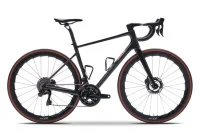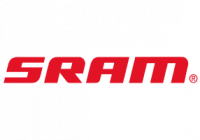Tubular vs. Clincher Wheels
 A version of this article was originally
A version of this article was originally
published in Triathlete Magazine
Tubular vs. Clincher Wheels
What are the pros and cons of tubular vs. clincher tires?I’ve heard that tubular tires ride better, but the gluing process sounds annoying and time consuming.
Chris, e-mail
Hi Chris,
This question has been a point of debate for years.Interestingly, both styles of tires have seen significant enough improvements over the past decade that the gap between the two styles is narrower than ever.Tubular and clincher tires, by design, remain quite different and it is important to recognize where each style excels so that you can choose the wheel and tire style that suits your needs best. For example, many race/event style wheels may be best in tubular while all-purpose clincher wheels may serve many riders best for daily training and riding.Furthermore, there is a wide range of wheels available in clincher and tubular format and thus the design intentions of each individual tire model can play a bigger role in many of the variables discussed below more than whether the tire is a tubular or a clincher.
Puncture Resistance – Because tubular tires often run higher tire pressure than clincher tires, they can be less prone to pinch flats and punctures.However, flat protection technology within a brand of tires usually transcends the style of tire and thus clincher flat protection is better than ever.For example, Continental offers the same effective and lightweight Vectran flat protection layer in their GP4000 clinchers and the GP4000SR tubular. Advantage:Slightly towards tubular.
Rolling Resistance – Rubber compound, how forgiving the tire casing is, how rough the road, tire pressure, rider weight, tubular glue/tape being used, and the material of the tube are just some of the variables that affect tire rolling resistance.The studies that I have seen show a mix of tubulars and clinchers in the top 10 lowest rolling resistance tires tested.In general, soft and supple casings (which are not always the most puncture resistant) combined with latex tubes (tubular or clincher) result in the lowest rolling resistance numbers.It is noteworthy that the lowest Crr (Coefficient of rolling resistance) on tubulars requires proper adhesion between the rim and tire. A poorly glued tubular can shift on the rim (thus creating friction under load) and will have higher Crr than a tubular that has firmer adhesion. Advantage: Toss up between an ideally glued tubular with a Latex tube and the lowest rolling resistance clinchers with a Latex tube (updated 5/13).
Ease of Installation/Emergency Repair –While it is usually assumed that clinchers are easier to install than tubulars, I personally do not give one type of tire a big advantage over the other in this regard.In a race situation, I would actually prefer to change a tubular (and can do it quicker) than some of the tightest fitting clincher tires,which can be very challenging and easy to break tire levers and puncture tubes when changing.There are two main reasons why the differential between clincher and tubular are not as big as they used to be in this regard:
1.The advent of tubular tape.Tubular tape took installing many tubular tires (a vulcanized tire casing is recommended) from being a multi-day process to just a matter of minutes.Having a razor blade in your flat repair bag so that you can cut the bias of the tire can make quick work of removing a tubular in an emergency too.
2.Clincher rims have engineering safety standards for diameter that are based on ranges.Some wheel companies specify rims on the bigger end of the range – Campagnolo, Fulcrum and Zipp are good examples of this – and even the most flexible and forgiving clincher tires (Vittoria, Zipp, Veloflex) can take some significant effort to install on some of these rims (Zipp’s new Firecrest profile found Zipp’s Carbon Clinchers install much easier than Zipp’s previous alloy clinchers). (updated 5/13)
Advantage:Tubulars for racing, clinchers for training.
Weight – Even the lightest clincher wheels are usually a couple hundred grams heavier than their tubular counterparts as tubulars don’t require the heavier hook bead rim construction of a clincher.Rotating mass, especially at the perimeter, is more valuable weight than static mass (like frame weight) and thus wheels can be a good place to save weight, especially on hillier courses.Advantage:Tubular.
Aerodynamics – Tires and rims are narrow enough that the biggest aerodynamic variables tend to relate to tire width and how smooth the tire transitions to the rim.In general, clinchers on the newer wider rim profiles offer the smoothest transitions as they don’t have the interference of a tubulars base tape.If aerodynamic details are high on your list of priorities, make sure that you select a tire that transitions as smooth as possible to the rim and be wary of going with too narrow a tire on many of today’s wider rims.Advantage: Clincher. (updated 5/13 to address the latest wide rim clincher options)
Ride Quality – Ride quality is one of the main reasons that many pros ride tubulars – a high quality tubular rides smooth, compliantly and responsively.While tubulars have held the advantage for years, latex tubes in combination with softer rubber compounds and casings have helped some of the best clinchers start to approach a good tubular.In fact, the newer tubeless style clinchers from Hutchinson (Tech Support, November 2008) have proven to give even the best tubular tires a run for their money in terms of ride quality.Vittoria, Zipp (made by Vittoria) and Veloflex are examples of leading brands when it comes to ride quality in both their clincher and tubular tires.Advantage:Tubular or Tubeless Clincher.
Traction/Rubber Compounds – Some of the best clincher tire manufacturers also make some of the best tubulars.Many of the rubber compounds, technology and constructions are shared between tubular and clincher offerings within a brand.For example, Vittoria uses the same rubber compound in their Corsa CX (tubular) and Open Corsa CX (clincher) tires.Other than tubeless clincher tires being able to be used at lower than average tire pressure without increasing the risk of a pinch flat, and thus providing great traction, there is not a big enough difference in this category to give one style of tire an advantage over the other.Advantage:Tie.
Durability/Reusability –Tire durability and wear is about the same between equivalent level clincher and tubular tires for the same reasons why traction is similar – brand technology is usually shared in both styles.Clinchers do have the advantage of being able to have a staple or small nail removed from the casing and being ridden again while a tubular can be more difficult to repair if the casing is cut.Advantage:Tie on durability, but the nod goes to the clincher on reusability.
Price/Costs – While there are fairly solid tubulars available at similar prices to a top of the line clincher tire and tube, the best quality tubular tires will cost $35-$50 more than the best clinchers.Advantage: Clincher.
Which type of wheel and tire should you be using?The technology is closer than ever.If you want maximum performance through the lowest weight, most aero profile and smoothest ride for racing and events I would still look at the tubular version of many carbon aero wheels.On the other hand, if you are looking for one wheel to race and train on or are simply more comfortable with the clincher design you are already familiar with you can rest assured that the performance, puncture resistance and ride of clinchers wheels is closer than ever to their tubular counterparts.
Ride hard and smart.
Ian
Ian Buchanan is co-owner of Fit Werx.Fit Werx has locations in Waitsfield, VT and Peabody, MA and offers cycling and triathlon products, specialty bicycle fitting and analysis services, consultation, and technology research.Fit Werx can be reached in VT at (802)496-7570, in MA at (978)532-7348 or through the Web at www.fitwerx.com.









